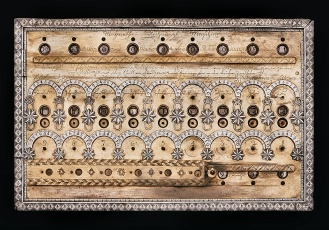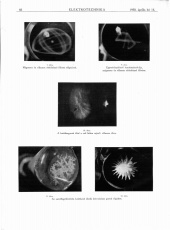User:Dusan Barok/Monoskop library, 2012: Difference between revisions
| Line 5: | Line 5: | ||
Monoskop library is a public resource for the new histories of media culture. | Monoskop library is a public resource for the new histories of media culture. | ||
Over the years Dušan Barok has collected about a hundred gigabytes of experimental films, video art, electroacoustic music, scanned versions of computer-aided paintings, graphics, prints, and numerous publications covering media arts and culture from their pre-history back in the 1910s up until the last decade. He has been including primarily the works relevant but not properly represented in art historical canon. Kept in the archives in different cities and not accessible online many of these works were destined to be kept out of sight for years to come. Being asked to share a film or recording many times he decided to share them all. | |||
To preserve the legacy of the works the three main aims were set: to reach the widest audience including researchers, involve more people in the initiative, and maintain public access. Rather than creating a grand historical narrative interweaving the content together, the collection is meant to provide source documents, and produce their context, so that multiple art histories can be produced. | |||
The work explores various questions related to private collecting and media archiving. Over the previous months a context for the collection has been created through a number of interventions, including a series of lectures, a magazine, a media art history conference, and an exhibition of remakes of historical media works by young artists. | |||
How does an artwork become | Symposium held in TENT on July 5, 2012, is an occassion for a public launch of Monoskop library and discussion with invited artists, scholars and cultural practitioners Annet Dekker, Darko Fritz, Florian Cramer, and Sandra Fauconnier. | ||
How does an artwork become historical? How can a media archive produce meaning? Why many digital collectors keep their treasures off the public eye? How do we define fair use of copyrighted material? Monoskop library explores the intersection between personal collecting, media archiving, and collaborative production of art history. | |||
http://monoskop.org/Symposium | http://monoskop.org/Symposium | ||
Revision as of 18:29, 11 June 2012
Dusan Barok, Graduation Project, Trimester 6, 2012.
Monoskop library
Monoskop library is a public resource for the new histories of media culture.
Over the years Dušan Barok has collected about a hundred gigabytes of experimental films, video art, electroacoustic music, scanned versions of computer-aided paintings, graphics, prints, and numerous publications covering media arts and culture from their pre-history back in the 1910s up until the last decade. He has been including primarily the works relevant but not properly represented in art historical canon. Kept in the archives in different cities and not accessible online many of these works were destined to be kept out of sight for years to come. Being asked to share a film or recording many times he decided to share them all.
To preserve the legacy of the works the three main aims were set: to reach the widest audience including researchers, involve more people in the initiative, and maintain public access. Rather than creating a grand historical narrative interweaving the content together, the collection is meant to provide source documents, and produce their context, so that multiple art histories can be produced.
The work explores various questions related to private collecting and media archiving. Over the previous months a context for the collection has been created through a number of interventions, including a series of lectures, a magazine, a media art history conference, and an exhibition of remakes of historical media works by young artists.
Symposium held in TENT on July 5, 2012, is an occassion for a public launch of Monoskop library and discussion with invited artists, scholars and cultural practitioners Annet Dekker, Darko Fritz, Florian Cramer, and Sandra Fauconnier.
How does an artwork become historical? How can a media archive produce meaning? Why many digital collectors keep their treasures off the public eye? How do we define fair use of copyrighted material? Monoskop library explores the intersection between personal collecting, media archiving, and collaborative production of art history.
Media
Photos
Essay
Abstract and bibs/ref + link to PDF (PDF must be uploaded to wiki).
Use Steve's recommendations for abstract length and bibliographic style.
Additional Information
non optional
- One page itemised budget estimate
optional
- Project URL: http://monoskop.org
- extra wiki links: http://pzwart3.wdka.hro.nl/wiki/User:Dusan_Barok/Monoskop_library_(project_proposal)


